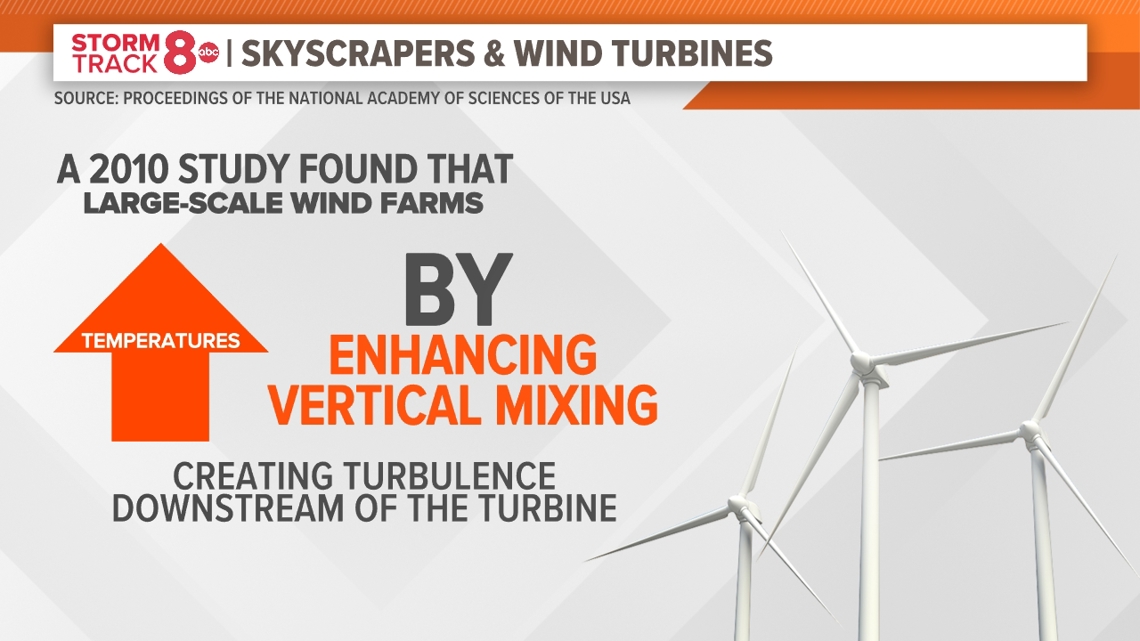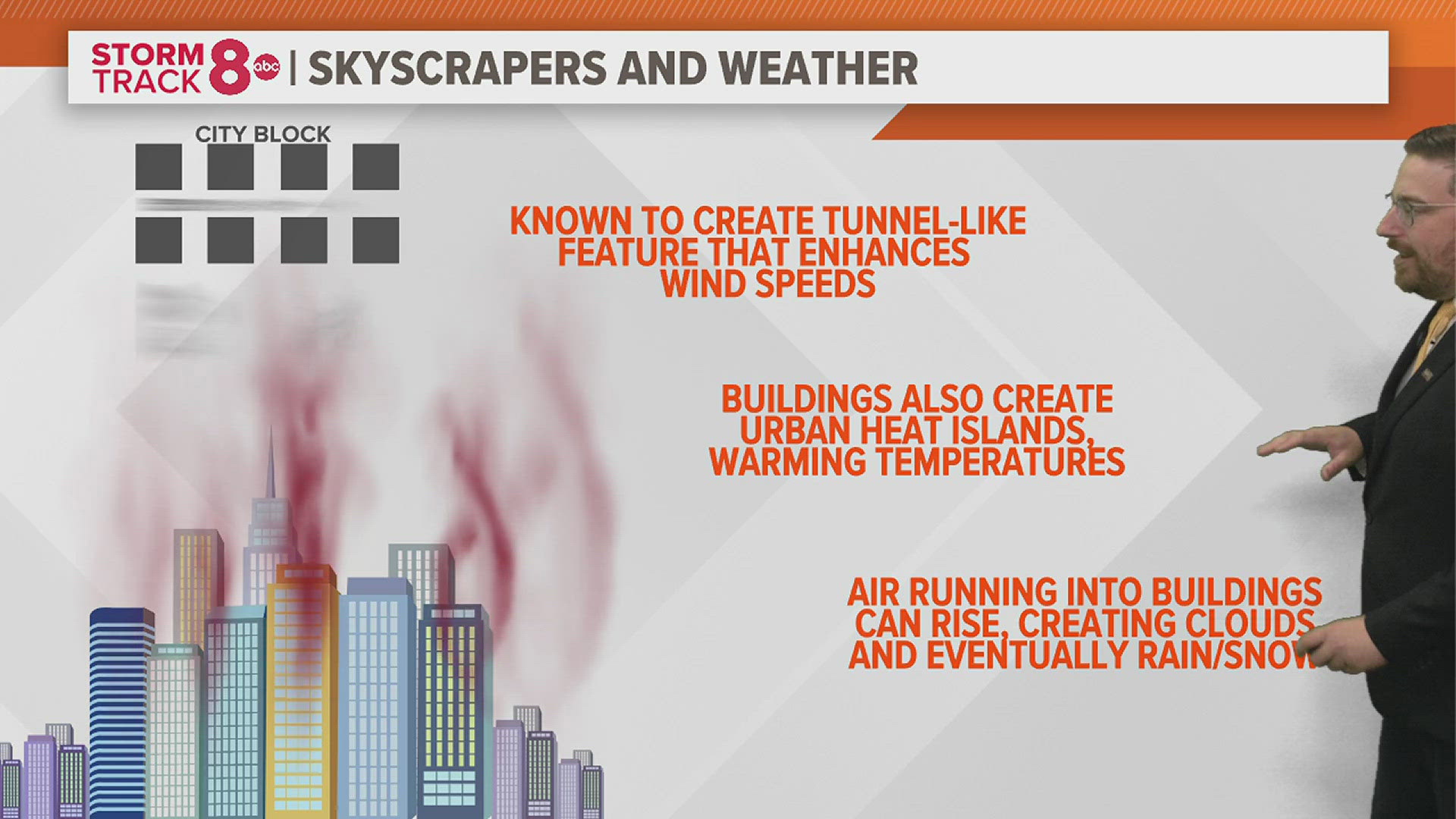MOLINE, Ill. — Large wind turbine farms are nothing new to the Quad Cities region. Skyscrapers, however, are not part of our typical landscape around here. They do have one thing in common though, and that is an impact on local weather conditions. How big of an impact? That's what Zach from Altona, Illinois, was wondering when he asked "Do giant wind turbines and skyscrapers affect the weather?" Let's dig in!
Changing of the winds
If you've ever been to a larger city, like Chicago or New York City, you've likely experienced how strong winds can be as you travel through different intersections. Even on days with the lightest wind speeds it always seems those winds get increasingly stronger within city blocks with tall buildings. Rows of those buildings act just like a tunnel, channeling all of that wind into a narrow space, increasing its speed in doing so.
Not only do these buildings channel some stronger wind speeds, but they can also create their own clouds, too! This is done through a process known as orographic lifting. Essentially, cool temperatures and high levels of humidity are forced upward into the atmosphere as that air runs into the building, forming clouds.
In addition to wind speed and cloud formation, these taller buildings can also contribute to warmer temperatures, too! We've talked about the urban heat island effect, and how massive areas of pavement absorb more heat energy from the sun. Buildings are the same way, and in some cases, give off their own heat energy.


Are wind turbines increasing temperatures?
Now, this is something I haven't come across before until just recently. It turns out, that there are studies that have been done involving large wind farms and their potential impact on the local temperature pattern.
A study conducted by scientists from the University of Illinois at Champaign-Urbana found that there is indeed a component to wind turbines and local temperatures near them. The biggest change? At night! The large blades reaching high above the ground tended to mix the air more thoroughly downstream of the turbine, allowing nighttime temperatures to remain slightly warmer. However, for most regions, the average temperatures may not change by much because warming and cooling effects end up canceling out, according to the researchers.


In this study, researchers took temperature records from a wind farm in San Gorgonio, California between June 18 and August 9, 1989. Those summertime records showed that nighttime and early morning temperatures remained higher downwind from the wind farm while the rest of the day was cooler.
Taking it a step further, this data was plugged into regional climate modeling revealing the warmer temperatures were likely due to increased air mixing due to the wind turbine blades.
Based on this data, researchers suggested designing wind turbine rotors that minimize turbulence, or the mixing of air downstream of the turbine.
Have a question that you would like me to answer for an upcoming Ask Andrew segment? Submit it, here!

